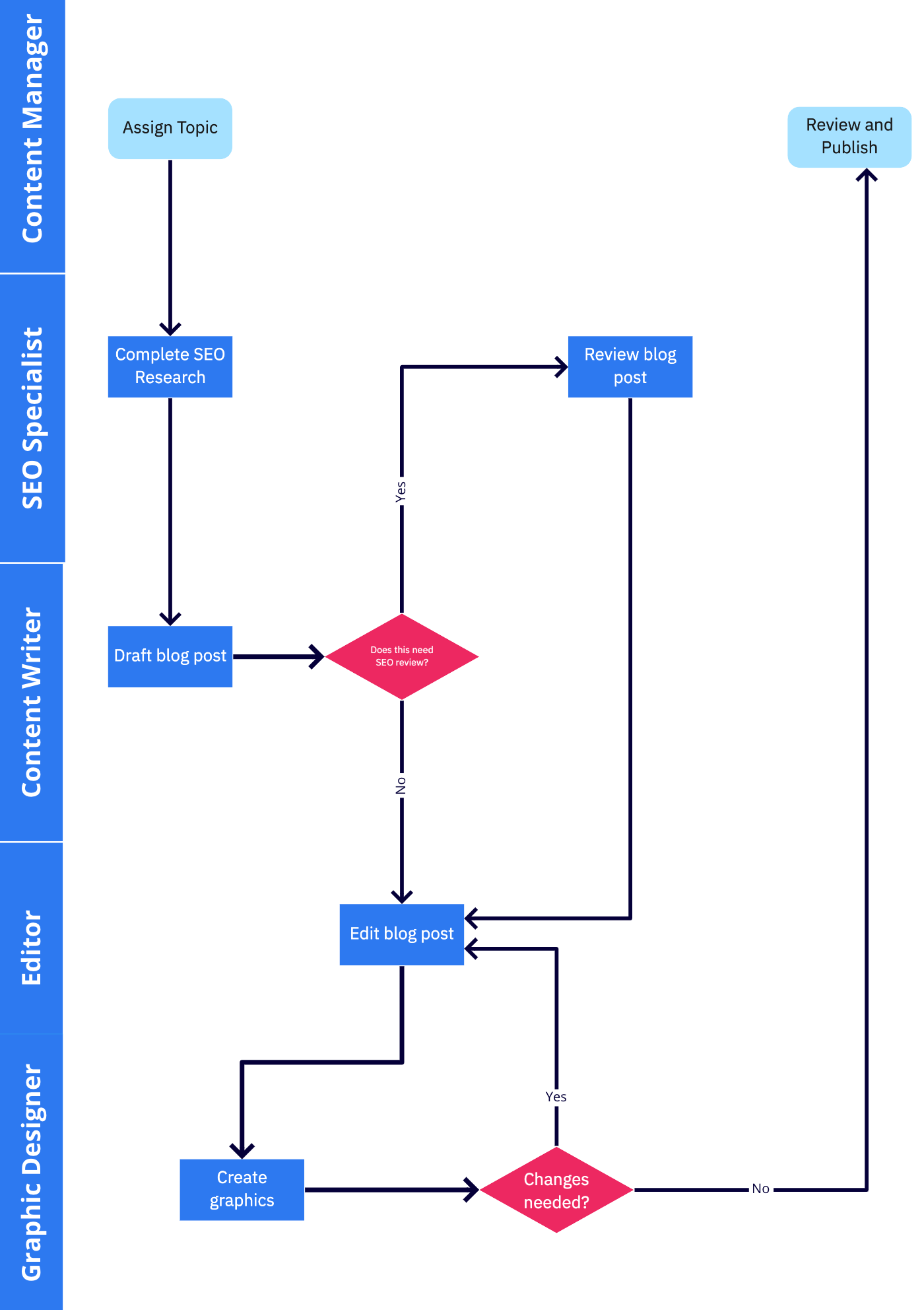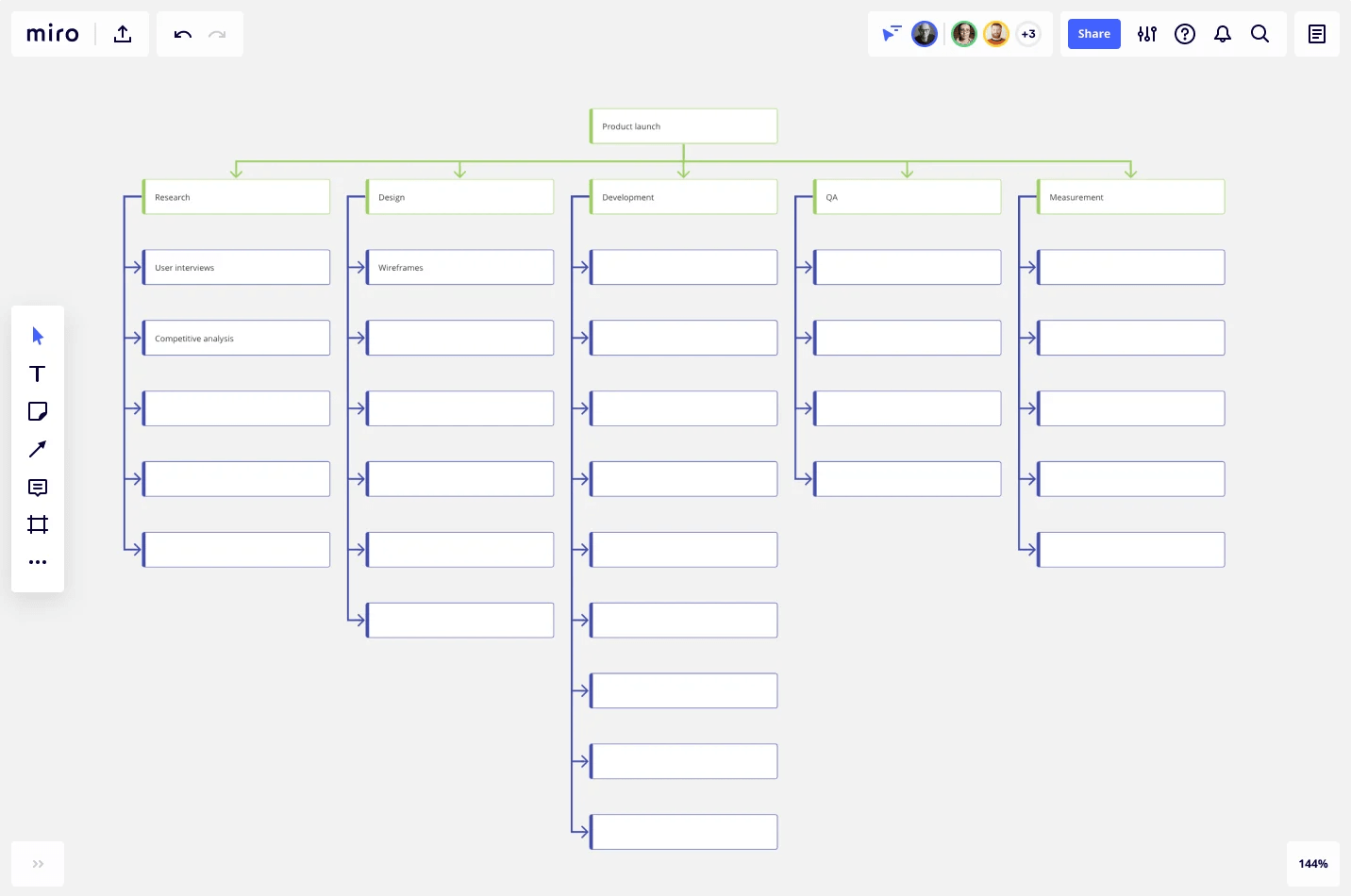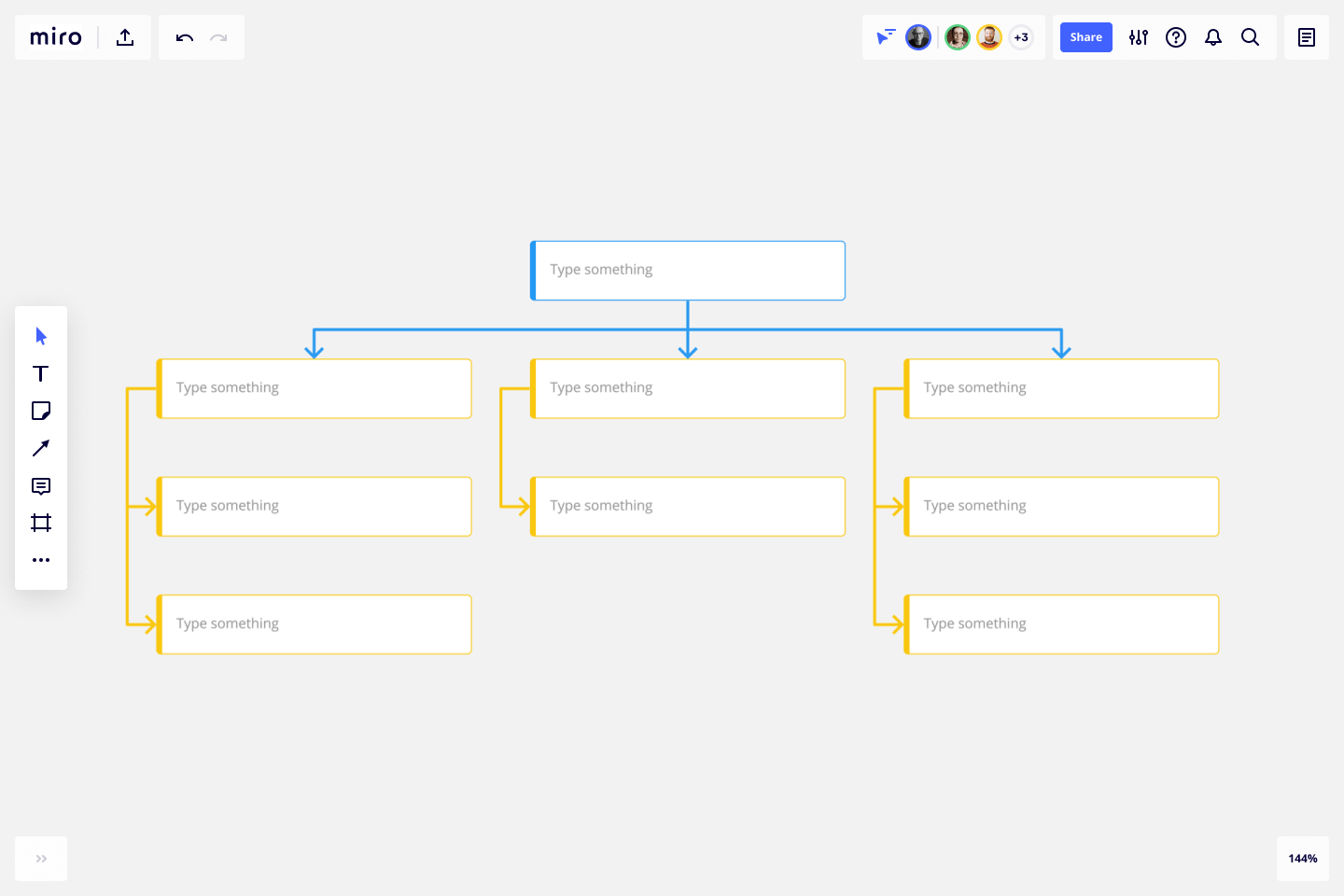Here’s the truth: You can benefit from visualizing even the simplest of processes.
Think about doing something straightforward and intuitive — like putting together a sandwich. You know how to make one, right? You put all of your desired ingredients between two slices of bread.
But, imagine if you were to break down the process of making a sandwich into its various steps. We’re willing to bet you’d find ways to be even more effective and efficient — like grabbing all of your ingredients at once rather than taking multiple trips back to the pantry.
That’s at the heart of process mapping. It’s a visual tool that helps you understand your current processes, as well as how they can be optimized.
What is business process mapping?
Process mapping is a visual exercise in which you quite literally draw (or, you know, map) out your workflows into a flowchart. Process mapping allows you to quickly get a grasp on:
- What typically happens as part of a process
- What order those tasks happen in
- Who is responsible for each part of the process
Think of it much like you would any other map — it’s a visual resource that shows you where you need to go next.
What are the types of process maps?
That’s the gist of a process map. But, if you’ve ever outlined a process before, you know there are many different ways you can put pen to paper, so to speak.
Process mapping is a flexible activity, and there are several different types of process mapping tools that you can use. Here are a few of the most popular:
- Flowchart: You’ve probably seen your fair share of flowcharts before. This is the simplest version of a process map, where you follow different lines and choices to work your way through a process.
- SIPOC map: This acronym stands for suppliers, inputs, process, outputs, and customer. It works through every step of the process, from beginning to end — starting with who supplies the inputs of the project (think things like tools, resources, and knowledge) and ending with who receives the outputs (meaning, the final deliverables).
- Swimlane map: Also frequently called a deployment map, this type of diagram outlines a process with particular emphasis on who’s responsible for what. Each person or team gets their own “lane” on the map where their specific tasks and responsibilities are plotted.
- Value stream map: A slightly more complex diagram, the value stream map also shows every step of a process with a focus on how you and your team can provide value at every single step. It’s highly focused on process improvement, as it helps you spot bottlenecks and inefficiencies and then use that information to streamline the process.
There isn’t one type of process map that’s inherently better than the others. They all have their similarities and can help you achieve the same goal: visualizing a process.
So, don’t be afraid to try out a few different structures and process map templates to find the one that works best for your specific project and team.
What are the process map symbols?
Remember, process mapping is a visual exercise. That means you won’t want your diagram to be cluttered with big blocks of text — that makes it harder to get the information you need at a glance.
That’s why process map symbols (also called process symbols or flowchart shapes) can be so helpful. These icons help you portray an idea or divulge a piece of information without having to explicitly write it out.
Here’s the good news: You have the freedom and flexibility to come up with symbols and a related key that work well for you and your team.
But with that said, there are a few default symbols that you’ll see used on a lot of different process maps. These include:
Oval: Used to indicate the beginning and the end of the process.
Rectangle: Used to indicate a task or step in the process.
Arrow: Used to show connections and relationships between different shapes.
Diamond: Used to show a decision that’s made during a process.
Those are often considered the “standards,” and there are plenty others used to represent things like inputs and outputs (often a parallelogram), delays (a rectangle with one rounded edge), and more.
Regardless of the symbols you decide to use, make sure that you document them and share them with your team so that you can all use them consistently. After all, symbols are only helpful when everybody is clear on what they mean.
How to make a process map
Now that you know the basics of process mapping, you’re probably eager to get started on your own. Fortunately, it doesn’t need to be an overwhelming undertaking (especially when you’re just getting started). Here are a few simple business process mapping steps you can follow.
1. Know what process you want to visualize
First things first, you need to know what process you’ll be outlining. Pick one, somewhat well-defined process to start. That will make it easier to move on to the next steps and will give you a chance to get more comfortable with process mapping.
For the sake of an example, let’s say you want to map out your team’s typical process for crafting a blog post — all the way from ideation to publishing.
2. Understand the steps and stakeholders
Next, you need to understand what type of information you’ll need to plot on your process map. This usually can be done in two categories: what happens and who’s responsible for it.
Sticking with our blog post example, you know that the following needs to happen as well as who is usually assigned to each of those tasks:
- Blog post topic is assigned (Content Manager)
- SEO research is completed (SEO Specialist)
- Blog post is drafted (Content Writer)
- Blog post is reviewed for SEO (SEO Specialist)
- Blog post is edited (Editor)
- Blog post graphics are created (Graphic Designer)
- Blog post is uploaded and published (Content Manager)
Don’t worry about putting tasks in the right order at this stage – your main goal is to get the steps and stakeholders outlined so that you can plot them on your process map.
3. Draw out the typical flow
Here’s the fun part: when you actually get to draw out your typical process. It can be helpful to use a process map template so you don’t need to start from scratch.
Return to your list of steps and stakeholders, and begin mapping out your typical process flow. It’s worth connecting with the team at this stage to make sure you’re creating the most accurate representation of your process. Remember, you can always adjust your map as you learn new information.
Here’s what a process map example (this one is a swimlane diagram) might look like using our blog post scenario:
Improve your team’s organization with Process Map templates

4. Review your map
Now that you can easily follow your typical workflow, it’s time to review the process (again, preferably with the team). As you look over your usual flow, ask yourself questions like:
- Are there parts of this process that don’t work the way the map says they should?
- Are there bottlenecks and sticking points you frequently run into?
- Are there ways you could change or optimize the process?
- Are there things that are missing from the process?
That will help you use process mapping not just as a tool to visualize your processes — but as something that actually helps you improve them.



